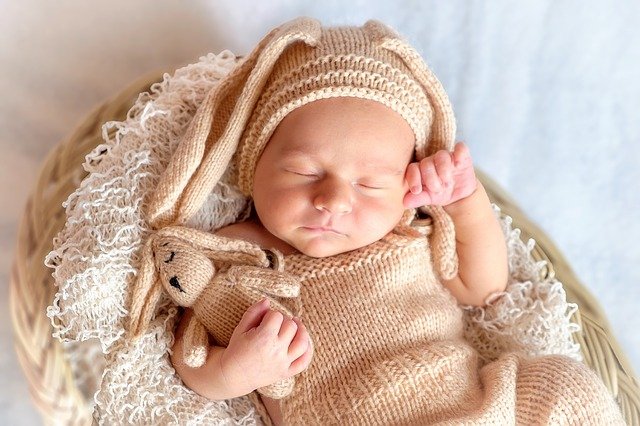attachment theory | Features & Types - Encyclopedia Britannica
文章推薦指數: 80 %
attachment theory, in developmental psychology, the theory that humans are born with a need to form a close emotional bond with a caregiver and that such a ... attachmenttheory TableofContents attachmenttheory IntroductionNormativefeaturesofattachmenttheoryIndividual-differencefeaturesofattachmenttheory FastFacts RelatedContent Media Images More MoreArticlesOnThisTopic Contributors ArticleHistory Home Health&Medicine Psychology&MentalHealth attachmenttheory psychology Actions Cite verifiedCite Whileeveryefforthasbeenmadetofollowcitationstylerules,theremaybesomediscrepancies. Pleaserefertotheappropriatestylemanualorothersourcesifyouhaveanyquestions. SelectCitationStyle MLA APA ChicagoManualofStyle CopyCitation Share Share Sharetosocialmedia Facebook Twitter URL https://www.britannica.com/science/attachment-theory GiveFeedback ExternalWebsites Feedback Corrections?Updates?Omissions?Letusknowifyouhavesuggestionstoimprovethisarticle(requireslogin). FeedbackType Selectatype(Required) FactualCorrection Spelling/GrammarCorrection LinkCorrection AdditionalInformation Other YourFeedback SubmitFeedback Thankyouforyourfeedback Oureditorswillreviewwhatyou’vesubmittedanddeterminewhethertorevisethearticle. JoinBritannica'sPublishingPartnerProgramandourcommunityofexpertstogainaglobalaudienceforyourwork! ExternalWebsites Academia-AttachmentTheory UniversityofEastAnglia-AttachmentTheory Print print Print Pleaseselectwhichsectionsyouwouldliketoprint: TableOfContents Cite verifiedCite Whileeveryefforthasbeenmadetofollowcitationstylerules,theremaybesomediscrepancies. Pleaserefertotheappropriatestylemanualorothersourcesifyouhaveanyquestions. SelectCitationStyle MLA APA ChicagoManualofStyle CopyCitation Share Share Sharetosocialmedia Facebook Twitter URL https://www.britannica.com/science/attachment-theory Feedback ExternalWebsites Feedback Corrections?Updates?Omissions?Letusknowifyouhavesuggestionstoimprovethisarticle(requireslogin). FeedbackType Selectatype(Required) FactualCorrection Spelling/GrammarCorrection LinkCorrection AdditionalInformation Other YourFeedback SubmitFeedback Thankyouforyourfeedback Oureditorswillreviewwhatyou’vesubmittedanddeterminewhethertorevisethearticle. JoinBritannica'sPublishingPartnerProgramandourcommunityofexpertstogainaglobalaudienceforyourwork! ExternalWebsites Academia-AttachmentTheory UniversityofEastAnglia-AttachmentTheory By LaneBeckes SeeAll • EditHistory TableofContents attachmenttheory Seeallmedia KeyPeople: JohnBowlby MarySalterAinsworth ...(Showmore) RelatedTopics: emotion infantandtoddlerdevelopment egocentrism insecureattachment secureattachment ...(Showmore) Seeallrelatedcontent→ attachmenttheory,indevelopmentalpsychology,thetheorythathumansarebornwithaneedtoformacloseemotionalbondwithacaregiverandthatsuchabondwilldevelopduringthefirstsixmonthsofachild’slifeifthecaregiverisappropriatelyresponsive.DevelopedbytheBritishpsychologistJohnBowlby,thetheoryfocusedontheexperience,expression,andregulationofemotionsatbothspecies(normative)andindividual(person-specific)levelsofanalysis.Bowlbybelievedthattheattachmentsystem,asheandotherscalledit,servedtwoprimaryfunctions:toprotectvulnerableindividualsfrompotentialthreatsorharmandtoregulatenegativeemotionsfollowingthreateningorharmfulevents.Thenormativecomponentofattachmenttheoryidentifiesthestimuliandcontextsthatnormallyevokeandterminatedifferentkindsofemotions,aswellasthesequenceofemotionsusuallyexperiencedfollowingcertainrelationalevents.Theindividual-differencecomponentaddresseshowpeople’spersonalhistoriesofreceivingcareandsupportfromattachmentfiguresshapetheirgoals,workingmodels(i.e.,interpersonalattitudes,expectations,andcognitiveschemas),andcopingstrategieswhenemotion-elicitingeventsinrelationshipsoccur. Normativefeaturesofattachmenttheory Bowlby’sfascinationwiththeemotionaltiesthatbindhumanstoeachotherbeganwithanastuteobservation.Inallhumanculturesandindeedinprimatespecies,youngandvulnerableinfantsdisplayaspecificsequenceofreactionsfollowingseparationfromtheirstronger,older,andwisercaregivers.Immediatelyfollowingseparation,infantsprotestvehemently,typicallycrying,screaming,orthrowingtempertantrumsastheysearchfortheircaregivers.Bowlbybelievedthatvigorousprotestduringtheearlyphasesofcaregiverabsenceisagoodinitialstrategytopromotesurvival,especiallyinspeciesborninadevelopmentallyimmatureandverydependentstate.Intenseprotestsoftendrawtheattentionofcaregiverstotheirinfants,whowouldhavebeenvulnerabletoinjuryorpredationduringevolutionaryhistoryifleftunattended. Ifloudandpersistentprotestsfailtogetthecaregiver’sattention,infantsenterasecondstage,knownasdespair,duringwhichtheyusuallystopmovingandbecomesilent.Bowlbybelievedthatfromanevolutionarystandpoint,despondencyisagoodsecondstrategytopromotesurvival.Excessivemovementcouldresultinaccidentorinjury,andloudprotestscombinedwithmovementmightdrawpredators.Accordingtothislogic,ifprotestsfailtoretrievethecaregiverquickly,thenextbestsurvivalstrategywouldbetoavoidactionsthatmightincreasetheriskofself-inflictedharmorpredation. Afteraperiodofdespair,infantswhoarenotreunitedwiththeircaregiversenterathirdandfinalstage:detachment.Duringthisphase,theinfantbeginstoresumenormalactivitywithoutthecaregiver,graduallylearningtobehaveinanindependentandself-reliantmanner.Bowlbybelievedthatthefunctionofemotionaldetachmentistoallowtheformationofnewemotionalbondswithnewcaregivers.Hereasonedthatemotionaltieswithpreviouscaregiversmustberelinquishedbeforenewbondscanfullybeformed.Intermsofevolution,detachmentallowsinfantstocastoffoldtiesandbeginformingnewoneswithcaregiverswhomightbeabletoprovidetheattentionandresourcesneededforsurvival.Bowlbyalsoconjecturedthatthesenormativestagesandprocessescharacterizereactionstoprolongedorirrevocableseparationsinadultrelationships,whichmightalsohaveevolutionaryadaptivevalueintermsofmaintaining,castingaside,orformingnewromanticpairings. Inadditiontoidentifyingthecourseandfunctionofthesethreedistinctstages,Bowlbyalsoidentifiedseveralnormativebehavioursthatinfantscommonlydisplayinattachmentrelationships.Suchhallmarkbehavioursincludesucking,clinging,crying,smiling,andfollowingthecaregiver,allofwhichservetokeeptheinfantorchildinclosephysicalproximitytothecaregiver.Bowlbyalsodocumenteduniquefeaturesofcaregiversandtheirinteractionswiththeinfantthatarelikelytopromoteattachmentbonds.Thefeaturesincludethecompetencewithwhichthecaregiveralleviatestheinfant’sdistress,thespeedwithwhichthecaregiverrespondstotheinfant,andthefamiliarityofthecaregivertotheinfant.Thesebehavioursandfeaturesarealsobelievedtobecriticaltothedevelopmentofadultattachmentrelationships. GetaBritannicaPremiumsubscriptionandgainaccesstoexclusivecontent. SubscribeNow
延伸文章資訊
- 1The Attachment Theory: How Childhood Affects Life - YouTube
- 2Attachment Theory: Bowlby and Ainsworth's Theory Explained
Attachment can be defined as a deep and enduring emotional bond between two people in which each ...
- 3What Is Your Attachment Style? Attachment Theory, Explained
There are four main adult attachment styles: secure, anxious, avoidant, and fearful-avoidant (aka...
- 4Contributions of Attachment Theory and Research - NCBI
One of the key concepts in attachment theory is the “attachment behavioral system,” which refers ...
- 5Attachment Theory - Psychologist World
Attachment theory states that a strong emotional and physical attachment to at least one primary ...

